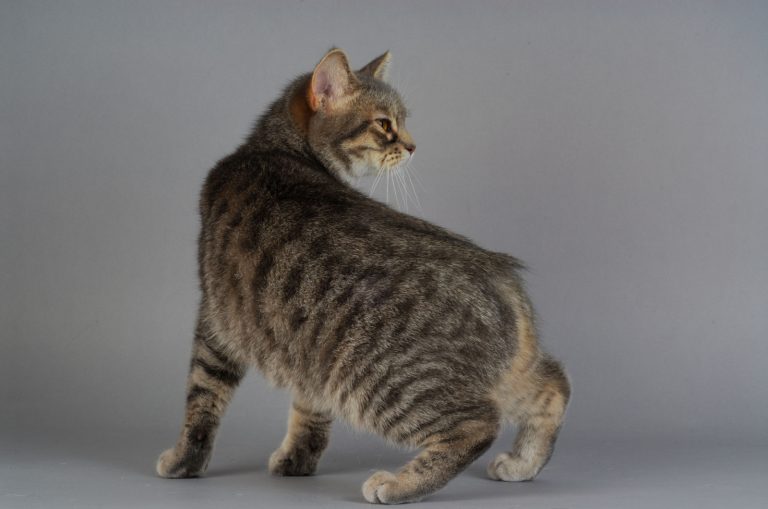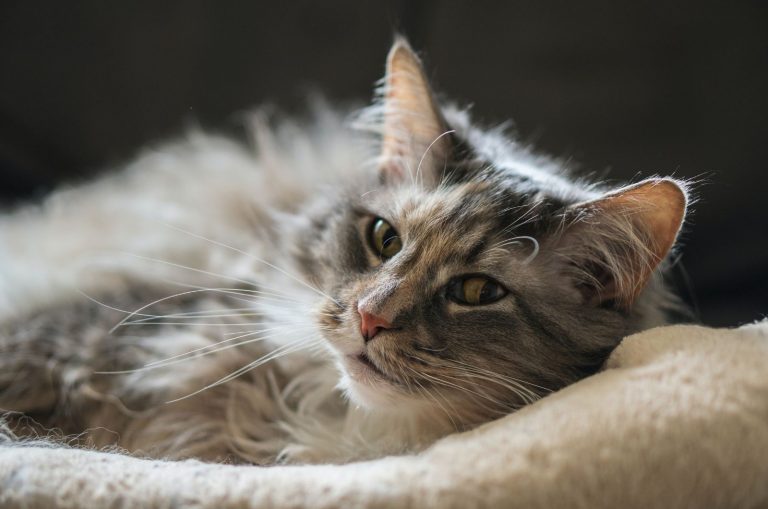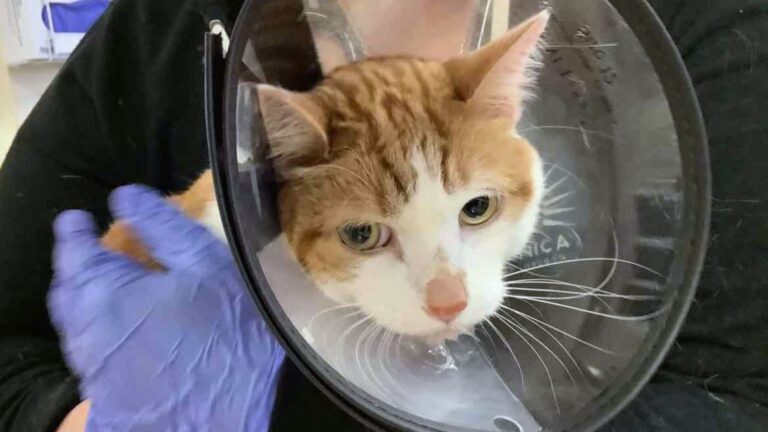Can Indoor Cats Get Fleas? Yes, But How To Prevent It?

There are a lot of potential parasites that just wait around to attack your cat. From ticks to heartworms, they all pose a certain threat to your cat. However, a lot of cat owners wonder can indoor cats get fleas?
If you have an indoor-only cat, how is it possible that it has fleas? Well, there are actually a few ways this can happen, but worry not because for every problem, there’s a solution, and flea problems are no exception.
If your cat gets infested with fleas, you’ll notice more scratching. However, sometimes your cat will scratch itself even after preventatives because of flea bites that form into scabs that are extremely irritating as they heal.
Read on to learn more about fleas and flea prevention.
How Can Indoor Cats Get Fleas? 6 Most Common Ways
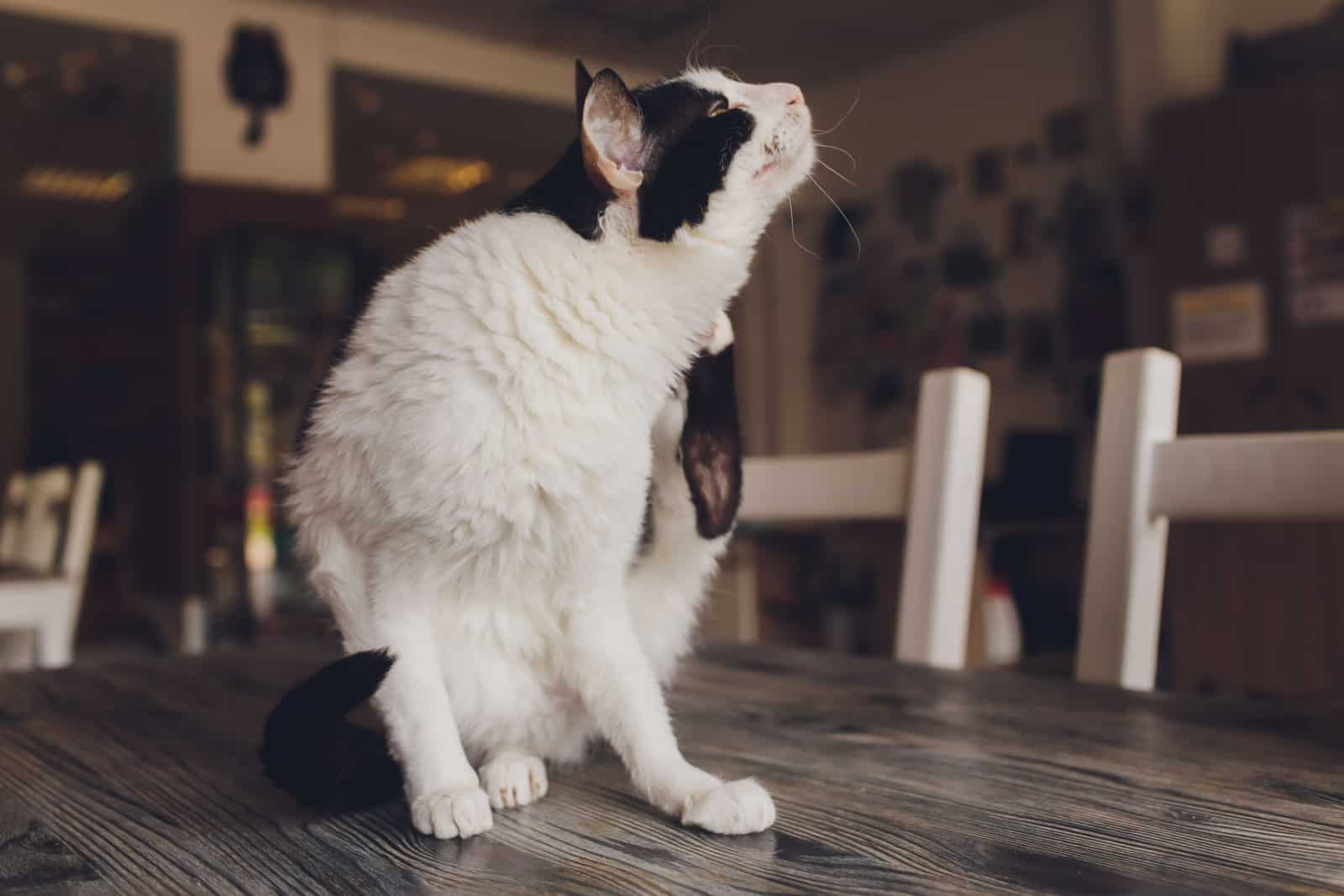
Although tiny, fleas can be really harmful to your cat. Fleas reproduce very fast; one female flea can lay more than 40 eggs in one day.
I know that you probably thought you were safe if your feline friend is an indoor-only cat. Unfortunately, fleas can survive without a host for some time and can get into your home and onto your cat in different ways.
1. Any Time Spent Outdoors Is A Threat
Perhaps your cat is perfectly happy and content living indoors, but still, you need to take it out at least once a year for its annual vet check-up. Or, if you need to travel somewhere urgent, and your cat needs to stay at a friend’s house or a boarding facility.
These are all potential flea areas, and you risk your cat catching fleas wherever you go. Cats can catch fleas at any location, be it the vet’s clinic or a boarding facility, since any place where pets or animals visit is a perfect place for a flea infestation to occur.
2. Other Pets Pose A Threat

The most common way cats get fleas is from another pet. These hitch-hiker fleas jump from another pet onto your cat and make themself at home. If you own a dog, and he’s on flea preventatives, your cat can still catch fleas.
There could be fleas walking on the dog, and before the flea treatment kills them, they leap off and inhabit your cat’s fur.
Your cat can also catch fleas from the neighborhood pets if you happen to pass by them or even if your indoor cat happens to approach a wild animal, e.g. a squirrel or a rabbit.
This is why the best prevention is year-round prevention, which is usually recommended by all vets too. It is the best prevention for fleas, no matter if your cat goes outside or not.
3. People As Well
Simply asking your house guests to take off their shoes before they come in is extremely helpful in preventing cat flea problems. Fleas can easily stick to our clothes or shoes, and that is the easiest way for them to infiltrate your home.
Fleas can’t fly, but they can jump really far, which is why they can jump and stick to us any time we pass by. It would be wise to clean your home as soon as your guests leave in order to minimize the chance of flea larvae or any flea dirt staying in your home.
4. Sharing Pet Supplies
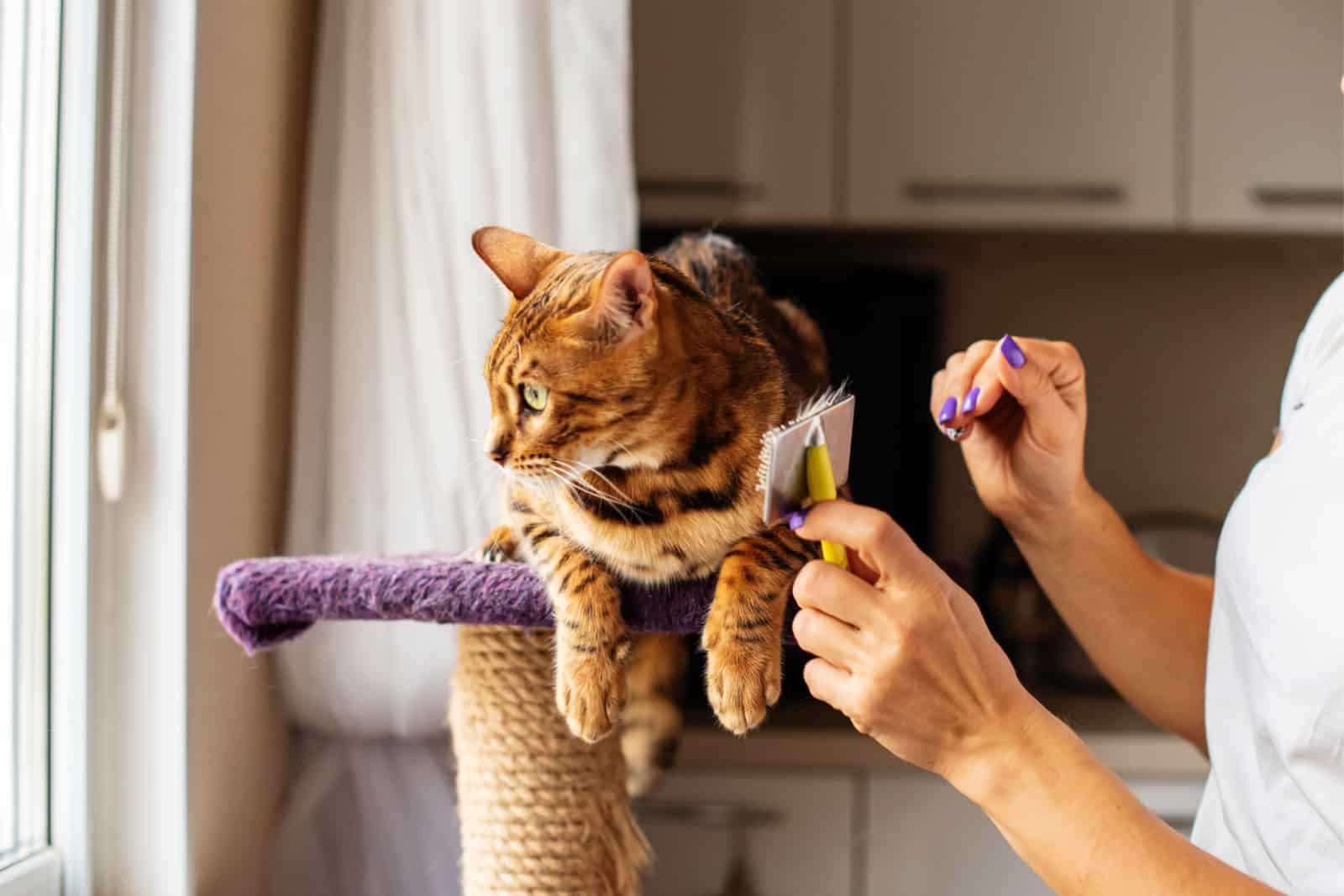
Fleas can easily hide away in a pet brush or in cat sweaters you bought at a second-hand shop, perhaps. So, always be careful with the things you share.
Inspect and sanitize anything you bring into your home, and also, beware of groomers who are not strictly professional, in case they don’t pay attention to such details.
5. Rodents
Fleas actually exist in many different species, like cat fleas, rat fleas, or dog fleas. However, don’t be fooled by their name because fleas are not choosers, as I already said. They jump from species to species looking for food.
Fleas are most commonly associated with dogs and cats, but they can live on a lot of other mammals too. If you have a mouse problem at your home, they might infest your home with fleas as well.
6. Moving To A New Home
When moving to a new home, parasites aren’t the first thing that comes to mind. Fleas are mostly found in apartments, especially those with carpeted floors. Central heating plus carpets provide the perfect environment for fleas to live in all year.
Sometimes fleas can live in some areas of your house, but they won’t be easy to see. If you have any concerns or your cat gets infected during the first days of moving, you can have your new home professionally cleaned and use a flea preventative on your cat.
If you know that the previous homeowners had flea problems or that they generally had pets, it is wise to use flea prevention.
See also: Black Specks: Acne Or Flea Poop On Cat Chin? Explained Below
The Four Life Stages Of Fleas
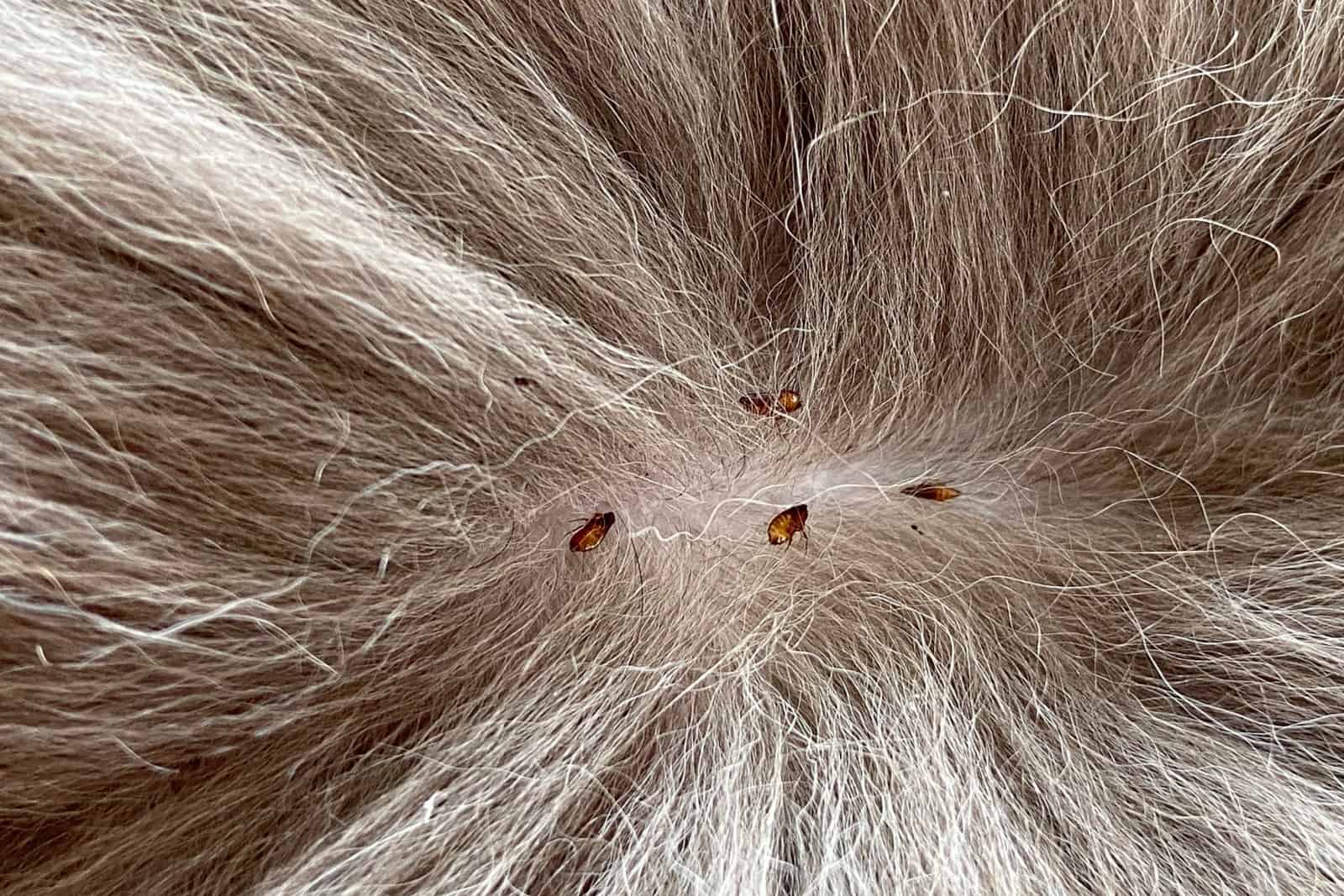
Fleas are tiny, irritating creatures that aren’t exactly choosers when it comes to species or things they will inhabit. They feed on blood, whether from animals or humans. The life cycle of a flea consists of four stages:
1. Flea Eggs
The flea’s life cycle begins once a female flea lays eggs, and those eggs get their ‘first meal’, i.e. your cat’s blood. Flea eggs are tiny and white, they resemble tiny grains of sand.
They are laid in your cat’s fur and can easily fall off as your cat moves around. However, they can still live in your carpets or other areas of the house. Eggs take from about two days to two weeks to hatch, and the next stage of their life begins.
2. Flea Larvae
Flea larvae are blind and try to stay in the dark. It takes them a few weeks to develop, and they do so by feeding on flea dirt, which is digested blood that the adult fleas poop out.
Flea larvae are also white, but they are legless at this point. They reach the next stage of a flea’s life within 20 days if the conditions are good.
3. Flea Pupae
The flea pupae or cocoon stage is the last stage of development in the life of a flea. It’s the final stage that leads to the emergence of the flea. It protects the flea for a few weeks before it emerges into the world.
The flea can stay in its cocoon for months if the environmental conditions aren’t good enough for it to hatch. Adult fleas won’t come out of their cocoons if there is no living host present.
They can feel your cat moving and can feel its body warmth, so they know when to come out of the pupae.
4. Adult Fleas
When adult fleas come out, they soon need to suck some blood, and right after their first meal, they will breed and lay eggs. Female fleas first need to eat in order to lay eggs. Adult fleas are also tiny, but they are dark-colored.
They become bigger and lighter in color after they are fed. Adult fleas spend most of their lives living on their “host”, where they feed on its blood, breed, and lay eggs. They can stay alive for months.
Now that you’re aware of the life stages of fleas, you can use that knowledge and terminate fleas as soon as you notice any sign of them.
What To Do If My Cat Gets Infested With Fleas?
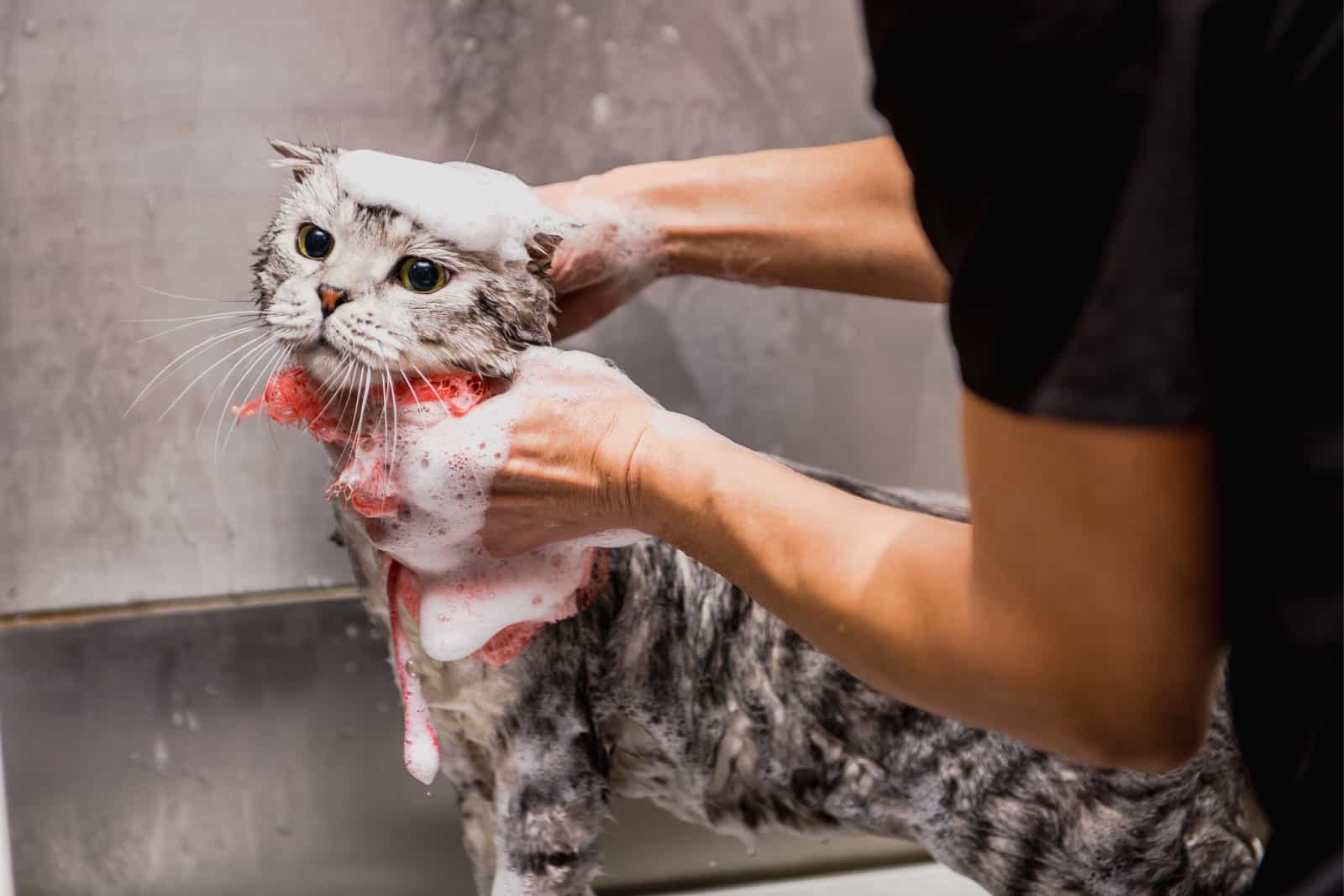
In case of flea infestation, you will notice signs such as your cat scratching excessively, flea dirt, or perhaps even hair loss. Fleas will most likely already be “settled in” by the time you notice them.
They will have laid eggs around your home, so only treating your cat won’t suffice. This is why it’s recommended that you treat all the pets in your home (in case you have more) and clean your house regularly and effectively.
By following these helpful steps, you’re sure to get rid of fleas.
• Flea Prevention Treatment
• Baths With Flea Shampoos
• Daily Cleaning & Vacuuming
• Deep Cleaning (of your bedding, pet beds, and other napping spots)
Flea prevention is recommended for all pets, and daily cleaning is good not only for getting rid of fleas, flea eggs, larvae, etc. It is also good for your health and your cat’s health overall.
In case of severe flea infestation, you might want to try out some DIY remedies or call exterminators. Always consult your vet because they’ll know what’s best.
What To Do To Prevent Them?
Flea prevention is the best solution for dealing with fleas. Now there are many different brands and products, but the first thing you need to do is consult your vet about it!
The flea prevention I mention here is the one that is commonly approved by most veterinary clinics and has shown to be most effective. It requires a prescription as well, so you’re sure to talk to the vet before you treat your pet for fleas.
There are other flea medicines available and prescribed by vets; it will ultimately depend on your cat’s condition and overall health.
If you want to know more about it before you talk to your vet, check out this article: PetArmor Vs. Frontline: Which Cat Flea Treatment Is Better?
Keep Your Home And Your Yard Clean
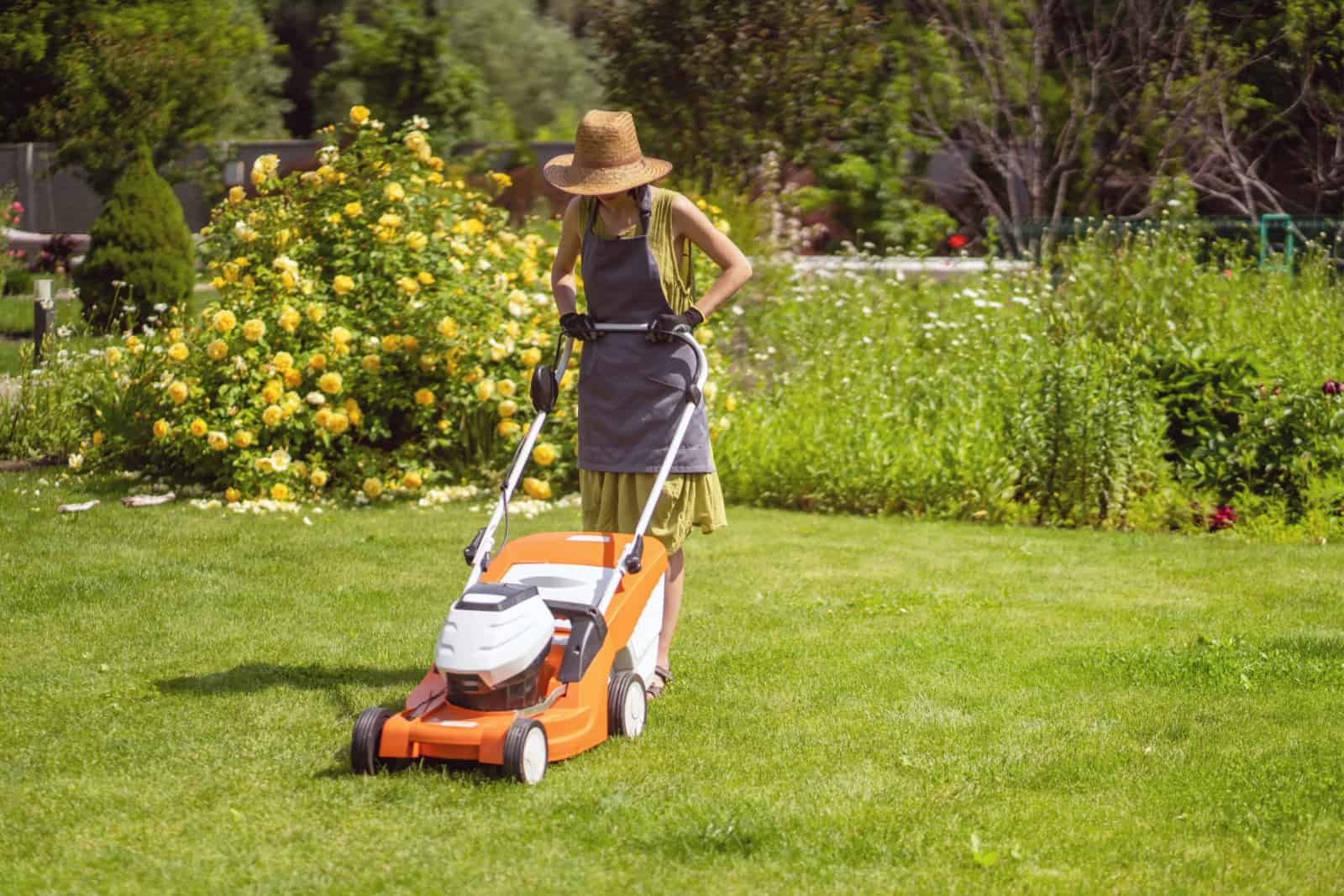
Reading about all these ways your indoor cat can get fleas makes you think; is there anything they can’t get fleas from? Fighting off fleas is an ongoing battle that I believe every pet parent has to fight.
However, there are some simple things you can do every day to minimize the risk of flea infestation in your cat.
Mow Your Lawn On A Regular Basis
Not only fleas, but ticks as well like to hang around in the tall grass and other damp areas. This is why it’s important to mow your lawn on a regular basis, so the grass is never too tall for your cat to walk in.
Keep Your Yard Clean
Piles of wood or leaves are a great hiding place for fleas, as well as stashes of rocks. Get rid of clutter regularly because if you don’t, you’re just providing fleas with more space to grow in.
Use Natural Flea Preventatives As Well
Other than your cat’s preventative against fleas, you can use mother nature’s gifts spread around your yard.
Ticks and fleas are repelled by cedar wood shavings, which you can sprinkle around the yard in all the shady and damp areas. Especially around your yard furniture or under the porch.
Regularly Groom Your Kitty
Grooming is good for so many different reasons. Grooming is a great way to bond with your cat.
It is often necessary in order to keep your cat’s fur shiny and clean, plus in the case of flea troubles, grooming allows you to look for fleas or any signs of other parasites.
Vacuum, At Least Once A Week
As I already said, vacuuming is important as it’s a great way to keep your home clean and flea-free. You should vacuum your home at least once a week, making sure to get in all those tight corners and under the furniture.
Additionally, what a lot of cat owners do is throw the vacuum dirt straight into the trash outside, so there’s no risk of fleas jumping out of your kitchen trash and back into your home.
Don’t Come Inside With Your Shoes On
If you’ve walked outside, especially if you have walked through the grass, it is advisable to take your shoes off before you enter your house.
This is extremely helpful in reducing the risk of fleas because you never know when fleas will get stuck on your shoes or clothes. Plus, you’re also keeping your floors and entire home clean as well.
Final Words
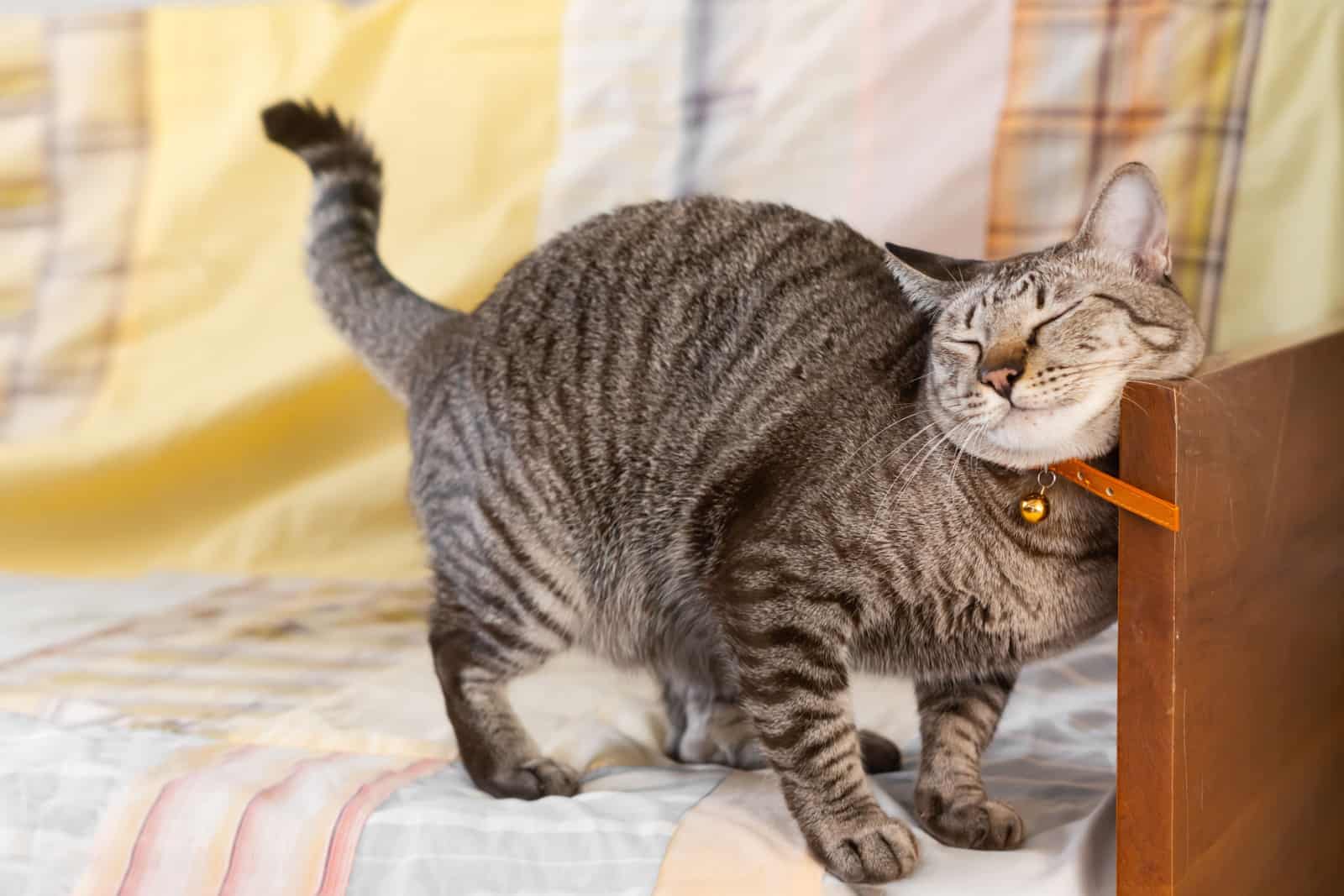
Fleas are generally a big problem for pets everywhere. Even a single flea poses a danger of flea infestation since it can lay up to 40 eggs. Some cats can also have flea allergies, so they might experience discomfort and itchiness.
Fleas can transmit other pesky parasites onto your cat as well, parasites like hookworms or tapeworms, which can, later on, be transmitted to you.
Fleas pose a great danger to kittens as well since their bloodsucking can lead to anemia and other medical conditions as the kittens’ immune systems aren’t strong yet. It is important to check your cat for fleas on a regular basis and take precautionary measures to prevent infestation. This way, you’ll ensure your cat and your family members stay healthy.

